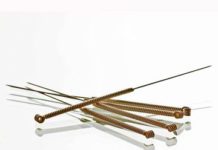
Triploidy is a rare chromosomal abnormality that develops at conception. Babies born with triploidy have an extra set of chromosomes, and this usually causes miscarriage in early pregnancy. Yet sometimes babies with triploidy survive for days or months after birth. Read on to learn more about the causes and symptoms of triploidy, and what the diagnosis entails.
What Causes Triploidy?
Normally, people have two sets of 23 chromosomes (one set from the mother and one set from the father) giving them 46 total chromosomes in the cell. But those with triploidy have an additional set of 23 chromosomes, which equates to 69 total chromosomes per cell. According to the National Organization for Rare Disorders (NORD), the extra set of chromosomes can come from either parent at the time of conception. There’s no evidence of triploidy being passed down through genetics. Paternal and maternal age also aren't factors.
How Common is Triploidy?
Triploidy isn’t a common chromosomal abnormality. An April 2017 study published by the National Center for Biotechnology Information reported that 2-3% of pregnancies are affected by triploidy, and it accounts for “approximately 20% of chromosomally abnormal first-trimester miscarriages. As such, triploidy is estimated to occur in 1 of 3,500 pregnancies at 12 weeks, 1 in 30,000 at 16 weeks, and 1 in 250,000 at 20 weeks gestation,” says the study. Experts have found that two-thirds of babies affected by triploidy are male.
What are Triploidy Syndrome Symptoms?
Oftentimes triploidy isn’t detected until the mother miscarries. But triploidy occasionally has some maternal symptoms, and babies born with triploidy share similar side effects.
Triploidy Symptoms in Mothers
When their baby has triploidy, pregnant women may get diagnosed with early onset preeclampsia, says Brian Shaffer, M.D., an associate professor in the Department of Obstetrics & Gynecology (Maternal Fetal Medicine) at Oregon Health & Science University. Preeclampsia is characterized by hypertension, swelling, and high levels of protein in the urine. On an ultrasound, the doctor might detect low amniotic fluid levels, improper fetus growth, or disfiguration of the fetus, says NORD.
Triploidy Symptoms in Babies
Triploidy affects the fetus differently depending on which parent contributes the extra set of chromosomes, according to Dr. Shaffer. In diandric triploidy (from the father), "the placenta is often very large and the tissue resembles a medical condition called a hydatidiform mole. The fetus many be small or normal in size with a small head," he says. "If the triploidy is digynic (from the mother), there is severe growth restriction and a relatively large head with a small placenta."
If a baby with triploidy is carried to term, he/she might have defects of the heart, brain, spinal cord, kidney, liver, and gallbladder. According to NORD, body features linked with triploidy include small jaw, cleft lip, wide-set eyes, low nasal bridge, and webbed fingers and toes.
How is Triploidy Diagnosed?
With triploidy, doctors normally notice an abnormal serum (blood) screening or an abnormal ultrasound scan, says Dr. Shaffer. To diagnose triploidy, doctors administer a karyotype, or chromosome analysis, to count chromosomes in the cells. This requires a sample of the amniotic fluid (through amniocentesis) or the placenta (through chorionic villus sampling). After the baby is born, doctors might also analyze the chromosomes of a newborn’s skin to confirm triploidy, according to NORD.
What is the Prognosis?
The prognosis for triploidy is bleak. "It's considered not compatible with long-term survival," says Dr. Shaffer. "Essentially the mortality rate is 100%."
The Genetic and Rare Diseases Information Center (GARD) says that mothers often miscarry fetuses with triploidy early in the pregnancy. If she doesn’t want to wait for the miscarriage, a woman can terminate the pregnancy – especially if she’s at risk of developing preeclampsia. She can also try carrying the baby to term, but a stillbirth is a real possibility.
A baby born with triploidy may survive outside of the womb for a few hours or as long as five months. According to Unique, a charity for rare chromosome and gene disorders, the longest known survivor of triploidy lived for 10.5 months before having a seizure. Babies born with triploidy are usually mosaic. "In mosaicism, there are two or more populations of cells – some with a normal complement of 46 chromosomes and some with 69 chromosomes," says Dr. Shaffer. "Survival is dependent on a number of circumstances but overall would still be considered poor."
Having or miscarrying a baby with triploidy won’t affect your future pregnancies or fertility. You won’t have a higher risk of a subsequent triploidy pregnancy. Plenty of online forums and support groups exist for mothers dealing with this chromosomal abnormality, and expectant parents should not hesitate to seek help if needed.
Triploidy vs. Trisomy: What’s the Difference?
Don’t confuse triploidy with another rare chromosomal condition called trisomy, which has a higher survival rate. With trisomy, only a select number of chromosomes get an additional chromosome in the cell. For example, an extra 21st chromosome (trisomy 21) is the cause of Down syndrome. Other chromosomes most often affected are the 13th (Patau syndrome) and the 18th (Edwards syndrome).
































